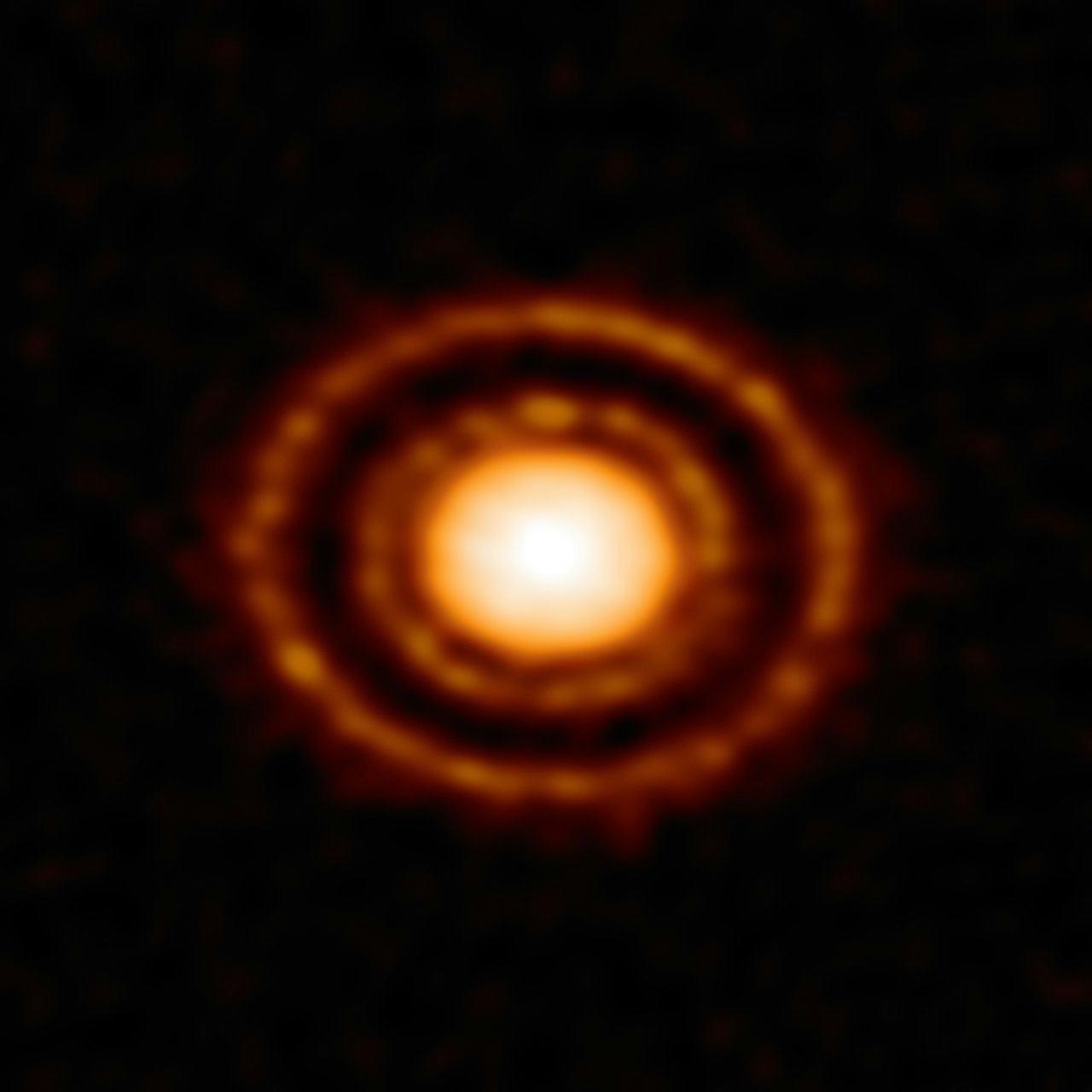
Scientists report finding possibly the youngest exoplanet ever discovered in a recent paper in Astrophysical Journal Letters. Discovered by measuring gas emissions in the planet’s circumplanetary disk, this finding holds revelations — and also complications — for our current models of planet formation.
Studying data from the Atacama Light Millimeter/submillimeter Array (ALMA) in Chile, an international team identifies evidence of gas emitting from the circumplanetary disk of a Jupiter-sized gas giant orbiting AS 209, a star approximately 395 light years away in the constellation of Ophiuchus. The paper and its data were part of a large ongoing study of ALMA data on the chemistry of planetary formation titled Molecules with ALMA at Planet-forming Scales or MAPS.
Here’s the background — Circumplanetary disks are accumulations of gas, dust, and particulate matter, thought to be crucial both to the formation of planetary systems. Estimated at only 1.5 million years old, this young planet is hoped to hold crucial information on how planets form in their early stages, with implications for models of the history of our own Solar System.
Jaehan Bae, an assistant professor of astronomy at the University of Florida, Gainesville, and one of the study’s authors, says that a planet forms within a circumstellar disk orbiting the star, creating a circumplanetary disk — a similar object at a micro-level.
“You can think of it like Saturn’s rings for example, and we know that the Galilean moons of Jupiter — Io, Europa, Ganymede and Callisto — must have formed in a circumplanetary disk of Jupiter,” Bae tells Inverse. “So we know that there had to be circumplanetary disks around Jupiter and Saturn in the past — and now we are watching a circumplanetary disk in another place in our galaxy.” Bae adds that the whole formation process takes place with only a few million years.

Furthermore, as Bae and his co-authors observe, this is the first time a planet has been detected by studying emissions of gas. While previous exoplanets have been identified from evidence of their circumplanetary disks, these have typically been spotted by studying emissions of dust, which can be observed in a continuum at a broader range of wavelengths. Observing circumplanetary disks by emissions of gas, by contrast, requires observing at much narrower frequencies. This makes the circumplanetary disk spotted around AS 209 an exceptional find.
As Bae notes, “the fact that we can see this blob of gas tells us there must be a body at that location with some large gravity. The presence of the circumplanetary disk tells us there must be a central source of gravity which holds the gas surrounding it.”
Digging into the details — The find is also interesting for the conundrums it presents. The circumplanetary disk surrounding the giant planet orbits its star at a distance of 200 astronomical units. The farthest known planet in our own Solar System, Neptune, orbits the Sun at only 30 AU. Bae says, “that’s about an order of magnitude farther away.”
It turns out that at this extreme distance, popular models for planet formation — such as gravitational instability and pebble accretion — run into some problems. Bae observes, “with this planet sitting at 200 AU, neither of these models works very well, so that is puzzling. In order for gravitational instability to work, the circumstellar disk has to be very massive. At least for now, the circumstellar disk of AS 209 is very light – a couple of orders of magnitude lighter than it should be for gravitational instability to operate.”
The other model — pebble accretion — equally presents problems. “The timescale of pebble accretion — of creating matter into a planetary core — increases rapidly with orbital distance,” says Bae. “At 200 AU one orbital period is a few thousand years, so in order to form a Jupiter-mass planet at that distance, it just takes too long.”
But Bae’s team is hopeful for further developments. “It doesn’t necessarily mean [these models] can be ruled out,” Bae says. “It could be that in the past when the planet formed, the circumstellar disk could have been much more massive, but then we need to explain how the disk has lost all its mass by now. That’s one question we don’t have an answer for yet.”

What’s next — Bae and his team are optimistic for the implications of future studies. The James Webb Space Telescope, in particular, offers hope for future discovery and the possibility of answers to some of the paper’s unanswered questions.
“What we see in our data is the emissions coming from the circumplanetary disk, not the planet itself,” Bae says. “But that’s what James Webb can actually do. With ALMA we are looking at things at millimeter wavelength; with James Webb we are going to look at things with infrared wavelength. Usually young planets, giant planets are hot – they emit most of their energy in the infrared wavelength and that’s perfect because we have James Webb in the sky.”
The team hopes to use data from the James Webb Space Telescope to detect thermal energy from the planet’s atmosphere directly. Information on luminosity, temperature, and more accurate mass readings could point to which model is a likelier candidate for the planet’s formation, as well as hopefully providing insight on how the planet formed so much farther out from its star. It may also shed light on some of the unsolved questions of our own solar system, including the possibility of finding hypothesized planets (the rumored Planet Nine, perhaps) beyond Neptune.







